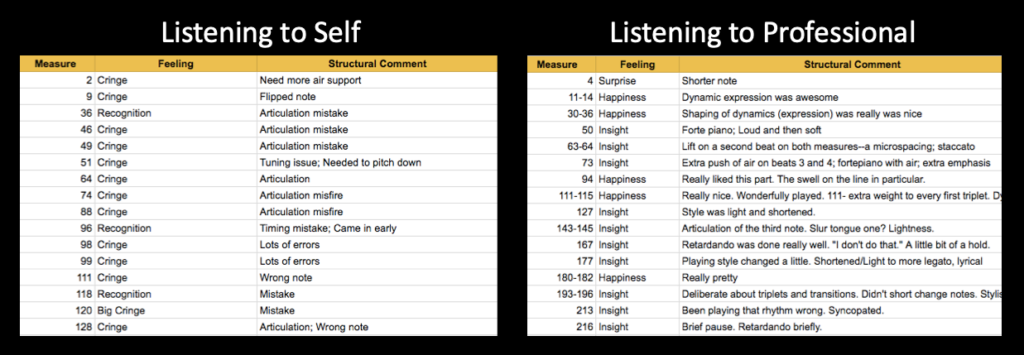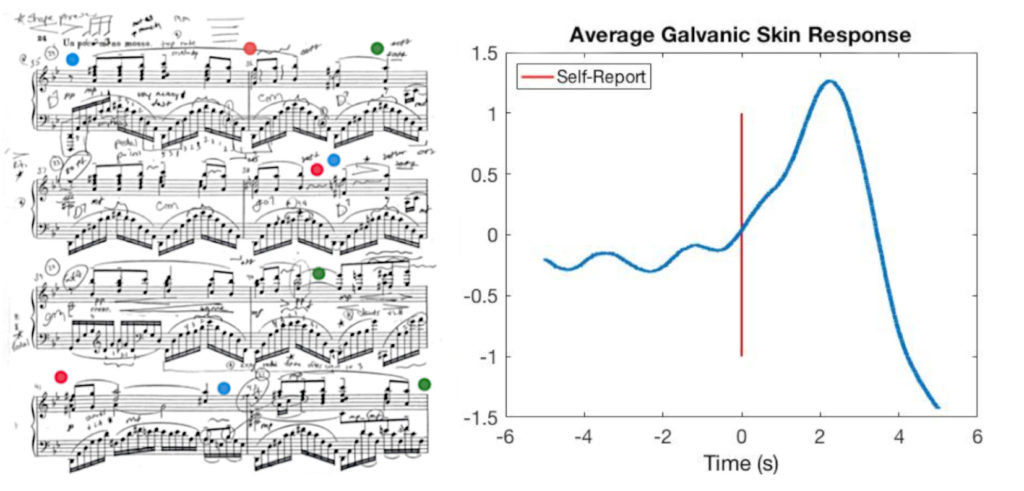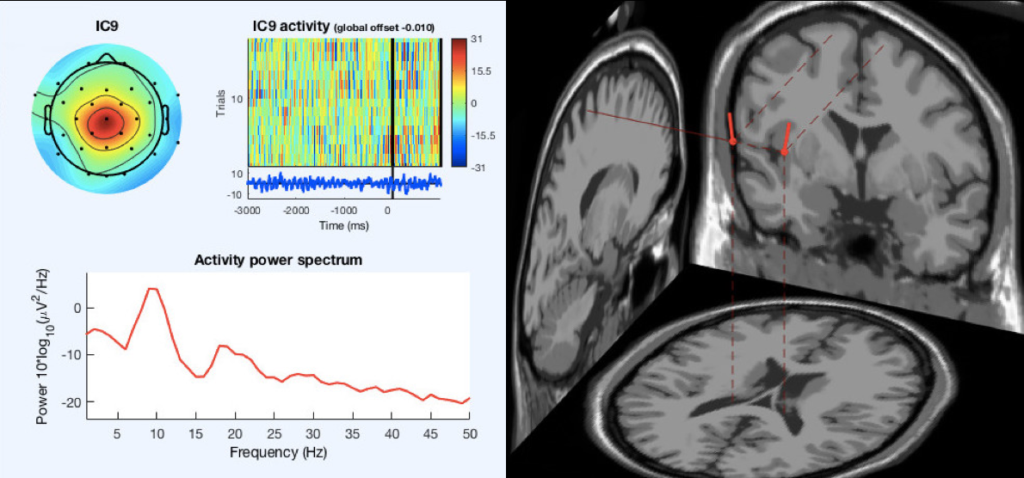I’ve played piano for over 20 years, but it wasn’t until I was in college that I began using recordings. I found that hearing professionals play my piece could trigger creative insights and new directions for my practice. Listening to recordings of myself on the other hand, was often quite painful. I could hear all of my mistakes and all of the work I still needed to do.

As a music researcher, I wondered how listening to yourself and others play the same musical piece could create such strong but opposing responses. I had been making BCIs for robotic musicians and music performance, and I was curious if I could detect these emotions and use them in music performance.

I set out to study them, and found similar results with other musicians. When performers listened to themselves play, they would experience many “cringe” moments. When listening to professionals, they would report feelings of happiness or “insight.” Both of them seemed to point in the direction of technical or expressive change.

I needed to localize their responses so that I could analyze their neurophysiological properties. This was a delightful challenge. Participants would verbally pause the recording, mark the point in the score where the affect occurred, and describe the feeling and why it occurred in their own words. Their Galvanic Skin Response (GSR) reflected the burst of arousal in their autonomic nervous system.

This was my first foyer into EEG research. I used EEGLAB to clean the data and analyze the components that were activated during these emotional moments. One of the interesting findings was a component with a frequency around 10Hz that localized to the primary motor cortex (BA 4).
Abstracts
- Winters, R. M., Lee, M., Culwell, C., & Weinberg, G. (2018). Insight and Cringe in Music Performers during Self-Reflective Listening. 4th Meeting of the Society for the Neuroscience of Creativity, 25–26. Cambridge, MA.
- Winters, R. M., Long, L., Lee, M., & Weinberg, G. (2017). Mapping the Experience of Creative Insight in Music Performers using EEG. Proceedings of the 2017 NeuroMusic Conference, 99–99. Boston, MA.






